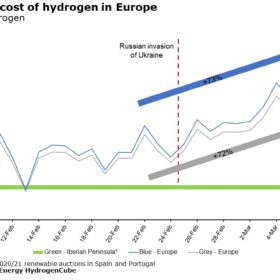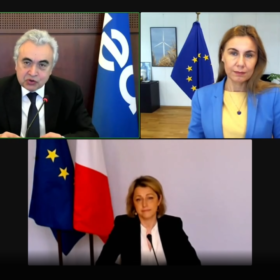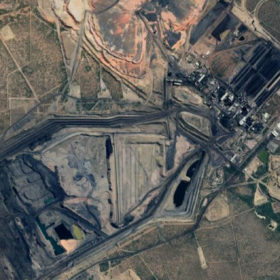Invasion of Ukraine an inadvertent boost for green hydrogen
Rystad Energy has joined BloombergNEF with a significant forecast for gray and blue hydrogen off the back of Russia’s invasion of Ukraine. According to the analysts, the impact of the war has sent prices of fossil fuel-tied forms of hydrogen production surging, leaving the gradual but consistent downward price trend of green hydrogen now looking remarkably competitive.
IEA outlines plan to rapidly reduce dominant role of Russia in Europe’s energy markets
The International Energy Agency today published a 10-point plan for Europe to reduce its reliance on natural gas imported from Russia. The plan would see Russian gas imports to EU member states reduced by one third within a year, and notes that further reductions within this timeframe would come with significant tradeoffs, likely to impact both energy prices and Europe’s Green Deal. The plan was presented by Fatih Birol, executive director of the IEA, in a virtual press conference held earlier today.
Russia deployed 233 MW of solar in 2021
Most of the deployed capacity comes from utility scale solar plants selected in the country’s tender scheme for renewables.
Heat-protective film to reduce solar module temperature by 3.5 degrees Celsius
An international research team has tested a holographic film based on prismatic concentrators that was presented by Russian scientists last year and is claimed to significantly reduce the operating temperature of solar modules, including that of thermal-photovoltaic devices. According to the new findings, the film is able to lower the operating temperature by around 3.5 degrees Celsius.
China and India to drive record world coal demand next year
Advances in solar power and other clean energy technologies have failed to keep up with demand for electricity as economies rebound from the Covid crisis and China and India’s fossil fuel appetite will ensure the world stays well short of what is needed for a net zero 2050 for at least the next three years.
Vershina Group secures PPA for 600 kW project in Russia
The solar array will cover around 30% of the electricity needs of a Leroy Merlin hypermarket in Volzhsky, in Russia’s Volgograd region.
Rusnano tests made-in-Russia CIGS solar tiles
The 15%-efficient solar tile is manufactured by Russian producer Solartek with CIGS equipment provided by Sweden’s Midsummer.
Russia launches major solar plant in Siberia
A $40 million solar field which will double the generation capacity of the Omsk region is planned to start generating in December as part of the national government’s clean air ambitions.
Russian group starts building 1.3 GW solar factory in Kaliningrad
Unigreen Energy plans to open a 1.3 GW, vertically integrated factory in the Russian exclave of Kaliningrad on the Baltic Sea. Initially, the facility will have an annual module production capacity of around 500 MW.
Russia’s renewables auction concludes with lowest solar bid of $0.059/kWh
In the procurement exercise, the Russian energy regulator allocated 775 MW of PV capacity, 1,851 MW of wind power, and 96 MW of hydropower capacity. The auction concluded with an average price of RUB 5.18 ($0.070)/kWh.










